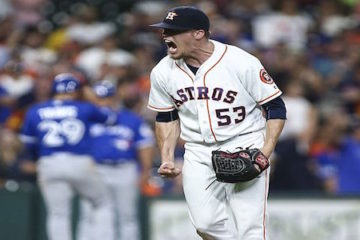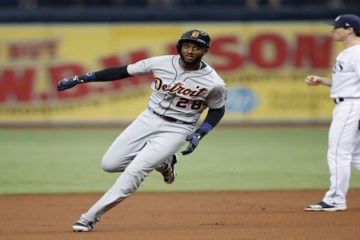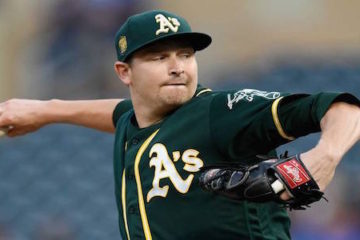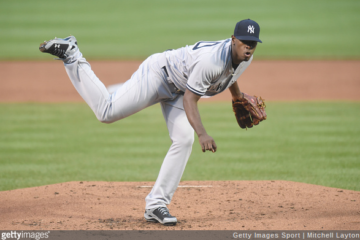2014 Fantasy Baseball: Third Tier National League Starting Pitchers
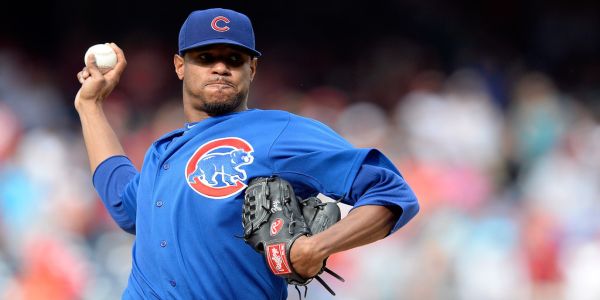

Source: Patrick McDermott/Getty Images North America
The last group of starters in the National League is the kind you only use in National League only leagues. After all, when we do the math on the first two tiers, we find more than 40 guys in the first two tiers. That includes pitchers with more than 100 innings in 2013. When we include injured guys and newcomers then we see that number balloon to over 50 pitchers in the National League alone. So, in mixed leagues we are dealing with the pitchers that would finish outside of the top 100.
However, you’d be surprised at the number of these guys that were drafted in mixed leagues. Some of them have big names and some of them outperformed their fair run averages by a very large margin. Unfortunately, many of you have already drafted these guys, but you can still take advantage of these pitchers in daily baseball.
For those just joining us, the past two articles took a look at the differences between tier one, tier two, and tier three starting pitchers. Tier three starters had fair run averages above 4.50 in 2013. Interestingly enough, they averaged more starts and more innings than their tier two counterparts. That by itself is interesting, but I’m not sure what it proves. What we do know is that their numbers were worse than the others in terms of strikeouts and walks. It makes perfect sense that the more contact you allow the worse your numbers are going to look.
|
Pitchers |
GS |
INN |
FRA |
GB |
SO/9 |
BB/9 |
|
| Tier One |
24 |
32.4 |
191.0 |
3.76 |
48.3 |
8.0 |
2.5 |
| Tier Two |
19 |
25.6 |
165.1 |
4.26 |
47.2 |
7.1 |
2.6 |
| Tier Three |
17 |
26.3 |
156.6 |
4.88 |
48.5 |
6.6 |
2.9 |
While it is not shown here, the key number is the strikeout to walk ratio. Strikeouts kept going down and walks kept going up. A two to one strikeout to walk ratio is still pretty darn good, but this just goes to show the direction the game is going. The pendulum between pitching and hitting is beginning to swing back towards the pitchers. At any rate, we also know that teams are becoming more sophisticated in how they stack their pitching staffs. They consider the home ballpark and the strengths and weaknesses of the fielders behind the pitchers.
Of course, that’s putting the cart before the horse. In this edition, we will take a look at the names of some pitchers that some people did draft. Maybe last season was just an aberration. In most instances those pitchers either outperformed their FRA or they relied on their good names. As many people have said, there is nothing more insidious than the memory of a great player. At least that is true in fantasy baseball.
Trevor Cahill—Arizona Diamondbacks
ERA: 3.99 SO/9: 6.3
FRA: 5.24 BB/9: 4.0
INN: 146.2 BABIP: .289
GB%: 44 LOB%: 73.5
You rarely ever see this much of a disparity between ERA and any of the estimators like FIP, xFIP, or SIERA. The Diamondbacks did have a tremendous defensive outfield last season and with Gerardo Parra in right field, they are still going to be better than average. However, Mark Trumbo is not going to make anyone forget Lou Brock in left field. So, the odds are good that Cahill’s ERA will approximate the FRA more than last year’s reasonable 3.99.
Ian Kennedy—San Diego Padres
ERA: 4.91 SO/9: 8.1
FRA: 4.87 BB/9: 3.6
INN: 181.3 BABIP: .295
GB%: 38 LOB%: 69.1%
Kennedy is a decent bounce back candidate. It has little to do with him per se as it does his new home ballpark. I wouldn’t hold my breath for the 2011 Ian Kennedy to return, but something better than the 2013 Kennedy should appear. Petco Park is a lot friendlier to fly ball pitchers than Chase Field was. The strikeout rate makes him a good candidate to bounce back as well. His walk rate was higher last season than in season’s past. So, if his control improves he might be a sleeper.
Edwin Jackson—Chicago Cubs
ERA: 4.98 SO/9: 6.9
FRA: 4.69 BB/9: 3.0
INN: 175.1 BABIP: .322
GB%: 51% LOB%: 63.3%
Edwin Jackson had one of those nightmare seasons that makes fantasy players leave him in droves. His left on base percentage was far below the 70 percent league average and his BABIP was well above the league average (.300). The Cubs infield defense is actually pretty good, so there is no real explanation for why this happened. Perhaps it was bad luck. Jackson is another pretty good bounce back candidate. His career left on base percentage rate sits at 70.5 percent and his career BABIP (.308) are closer to the league averages and enough to make you think he will be much better this season.
Marco Estrada—Milwaukee Brewers
ERA: 3.87 SO/9: 8.3
FRA: 4.51 BB/9: 2.0
INN: 128.0 BABIP: .262
GB%: 38% LOB%: 74.1
Like many of the others on this list, Estrada’s ERA was much better than his fair run average. We can trace that back to his left on base percentage and his BABIP. Part of that can be attributed to the excellent glove work of Carlos Gomez. Gomez carried the defense by himself in the outfield, but he had some help with Norichika Aoki. Aoki is gone and replaced by Ryan Braun and Khris Davis. That likely isn’t going to turn out well for a pitcher like Estrada.
Ervin Santana—Atlanta Braves
ERA: 3.24 SO/9: 6.9
FRA: 4.62 BB/9: 2.2
INN: 211.0 BABIP: .267
GB%: 46% LOB%: 76.9
Score one for the Kansas City Royals. They acquired Santana and rented him for one season. He just happened to pitch way above his head. Now, they have a first rounder from the Braves and the Braves likely get to enjoy the lovely regression to the mean. Santana will likely make his debut in May and some people will consider pulling him off the waiver wire. I would pass on that based on these numbers. His ERA will likely balloon back to 4.50 or thereabouts.


